Outlet ⌛ Smith’s CCKS 2-Step Knife Sharpener , Yellow ⌛
$3.98 Original price was: $3.98.$3.18Current price is: $3.18.
- Buy quality, buy with us.
- Get the quality you deserve, for less.
- Your needs, our top priority.
- Multiple payment options for secure shopping with SSL

- Material: Synthetic
- Brand: Smith’s
- Color: Yellow
- Product Dimensions: 2.71″L x 0.88″W x 2.33″H
- Item Weight: 1.6 Ounces
- Crossed Carbide Blades Provide Quick Edge Setting
- Crossed Ceramic Rods Provide a Razor Sharp Edge
- Non-Slip Rubber Feet for Added Safety.
- Excellent for use on all types of knives, especially filet knives
8 reviews for Outlet ⌛ Smith’s CCKS 2-Step Knife Sharpener , Yellow ⌛
Add a review Cancel reply
Related products
-20%
Rated 4.43 out of 5
-11%
Rated 4.29 out of 5
-25%
Rated 4.71 out of 5
-20%
Rated 4.71 out of 5
-20%
Rated 4.57 out of 5
-20%
Rated 4.29 out of 5
-20%
Rated 4.57 out of 5
-20%
Rated 4.43 out of 5

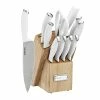


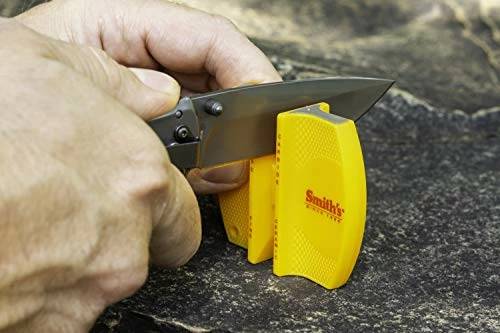

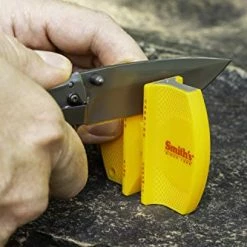
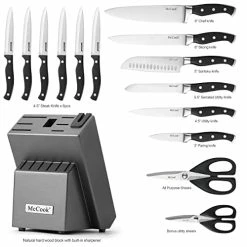

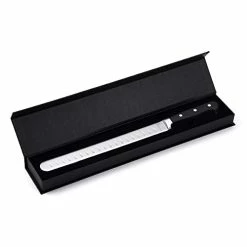
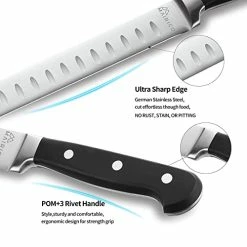



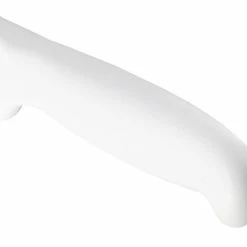



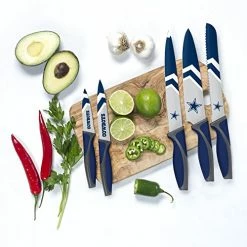
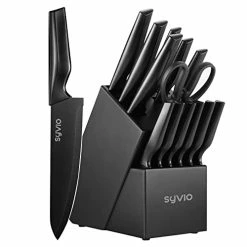
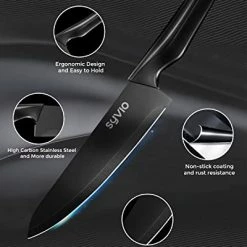
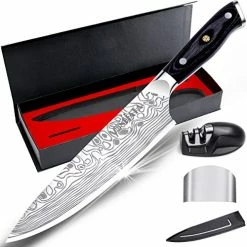
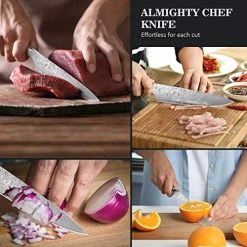
MDuck –
My favorite sharpener is the “Deluxe Turn-Box Crock Stick” by Lanksy, although I’ve had similar “crock sticks” from others. Ceramic rods (or the bottom rim of a stoneware coffee mug) work wonders.I’ve also used Arkansas etc. stones and very fine grit sandpaper, BUT flat stones and flat sandpaper require a degree of “free hand” control – keeping the angle consistent – that I’ve never properly mastered, so it takes me a lot of time and some portions of the blade end up being sharp and some portions not so sharp.More recently I’ve heard great things about the original design Worksharp, which uses a motorized belt with embedded grit (sandpaper, essentially, that won’t break down) and solves the “angle” thing by having a draw-through guide. Their conventional flat surface hone also has an angle control that might help, but I don’t want to invest the time and money since this Smith’s plus some blades to a pro sharpener work for me.At the end of the day my current solution is this Smith’s CCKS 2-step, using two of them, one for quick sharpening of kitchen knives, and the second for finish sharpening of pocket knives – the ceramic rods tend to clog up so I keep a relatively clean one for the pocket knives. (Yeah that’s counter intuitive – you’d think the kitchen knives should get more love and attention, but pocket knife fans want to brag about “hair popping sharp” and people who used kitchen knives generally just want some tomato cutting success.)The carbide side of the Smith’s really never wears out for me. IF the ceramic rods side works, I never touch the carbide side, since the carbide side removes metal. It’s roughly 20-25 degrees, and seems to match most but not all of my pocket knives. With my nicer pocket knives, if the ceramic rods side won’t sharpen due to an angle mismatch, I just save that pocket knife for a factory resharpening or professional service as part of a batch, taken in periodically (hint: factory resharpening is always better, they keep the original blade angle, while most of the local resharpening shops don’t).With my budget pocket knives, it depends on whether they arrived with a “pop the arm hairs, slice typing paper” edge or what I call a utility edge – fine for most knife purposes, but not for showing off. If they come with hair popping sharpness, I usually try the ceramic rods on the Smith’s to see if the angles are compatible enough for resharpening, and if they are, I’m good to go.If the ceramic rods won’t restore the edge, I save those budget (but originally hair popping sharp) knives and run them through a local sharpening service in a batch later on – shipping them back for factory resharpening isn’t worth it and often isn’t offered, except for Buck. The reason I take better care of budget knives that come with exceptional edges is because I figure if the designer, company, and factory cared enough, so do I. IF I’m lucky, the Smith’s portable sharpener is enough.BUT there are those budget knives that just come with a decent but not exceptional working edge.With these, I will use the carbide side of the Smith’s to “re-profile” the blade into the angle that is acceptable to the Smith’s sharpener. I know that might not be the edge angle the designer intended, but it’s fast and easy and practical for me to use the Smith’s to “adjust” the factory angle.Thereafter, all I use is the ceramic side of the Smith’s – which now matches the edge angle and works.The BIG limitation of the Smith’s is “loading up” the ceramic rods with black metal particles from the resharpening process. With conventional crock sticks, we are supposed to use scouring (cleansing) powder like Ajax to clean off the black grit (NOT Bartender’s Friend, a non-abrasive cleanser).While re-writing my review today, I noticed one reviewer recommended moistening the ceramic rods before sharpening, to form an abrasive slurry. I’m going to try this and see if it helps with the effectiveness and lifespan of the ceramic rods side.Otherwise, I just periodically add a new Smith’s to my collection. At under $4 it’s a more cost-effective solution than buying a fancy kit.PLUSES: consistent angle since this is “draw through”. I can maintain a more consistent draw-through angle on this portable, than I can with v-rod crock sticks which call for a consistent “slice down” angle. Also, in general, once you get the edges on your knives to match the angle of the carbide and ceramic rods in the Smith’s, you are good to go for future resharpenings.NEGATIVES: Only one angle. The carbide is VERY aggressive in terms of removing stock edge material, so only use it as necessary. The portion of blade closes to the handle may never actually get resharpened, due the slight thickness of this hand held sharpener.FAVORITE USES: Opinel, which are otherwise hard to resharpen in Inox.
wolfhound –
I saw this item used on a YouTube video testing inexpensive knives. The testing procedure used several inexpensive sharpeners during their test. Incidentally, they found that this Smith product worked the best. Given the low price, I thought I would give it a try. I was very pleased to find that it sharpened my carbon steel kitchen knives very quickly and produced a decently sharp edge. The sharpener is quite small. However, it was easy to find a home for it in my crowded kitchen drawers. There isn’t a lot of surface area to hold it steady while using. However, it works so well that I find that to be a non-issue.
MyAmazonAccount –
I have this and the larger one. I like this one because it also has the ceramic bit, which is a vital last step since these basically “sharpen” your knives by slicing off the metal. The ceramic is important to smoothing any rough bits and giving a really good cut. Good for people who can’t afford/don’t know how to do regular professional maintenance. Would I use it on top-quality knives? No. But if I had top-quality knives, I wouldn’t be on Amazon looking for knife sharpeners, either.Just be careful using this version; it is really easy to slice yourself up if you are using the sharpening side of this one as opposed to the one with the giant handle.
Cracker Lawson –
It works when I write a review I have tested the item and I was very pleased with this item I sharpened 5 knives four pocket knives and a kitchen knife but I liked the price point best it’s something the advantage guy can afford on a budget
esarbege –
When I find these little guys, I buy them in batches. They’re small, sharpen knives quickly and well and can be used anywhere. Perfect to put in a kitchen drawer, tackle box, take hunting or anywhere that you might need to sharpen a knife.They do need to be replaced ever so often but at this price point, you can grab a few and keep them on hand. Use them as gifts when you need a little something for someone unexpectedly. Also makes great stocking stuffers.
BManClarkDude –
Every time I pick up a knife in the kitchen, I run it through one of these sharpeners. I ordered another one to keep in my get home bag.
Herb Albert –
I have about 6 diff, sharpeners some up to $50, BUT THIS IS THE VERY BEST I’VE EVER HAD…THANK YOU!!!! HERB
oldbaritone –
Dull knives need more pressure to cut, and they’re hard to control. Sharp knives cut with gentler pressure so you can control them better. This sharpener takes just a few strokes to bring your knife back to razor-sharp. Easy-to-use. Once you get used to sharp knives you’ll never want to use a dull one. It’s easy to sharpen with this tool.